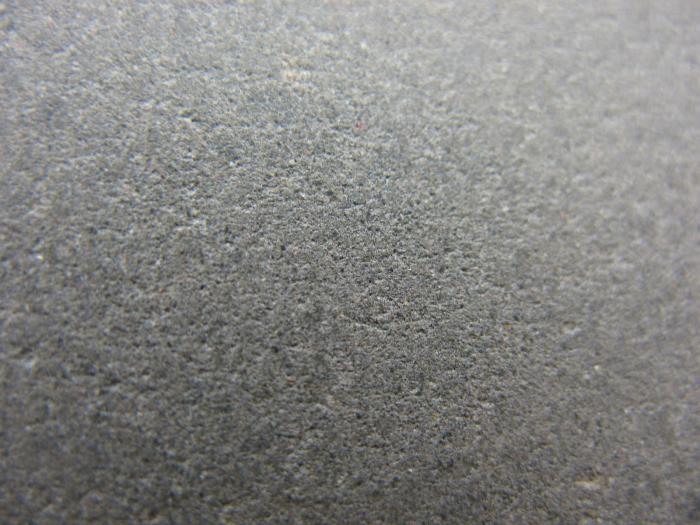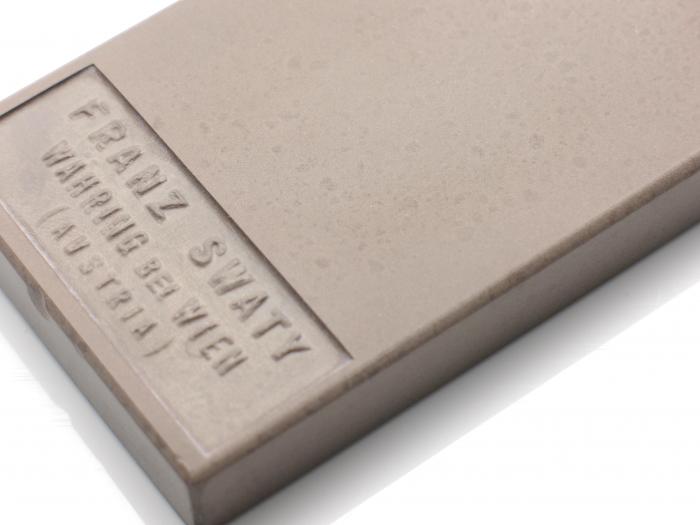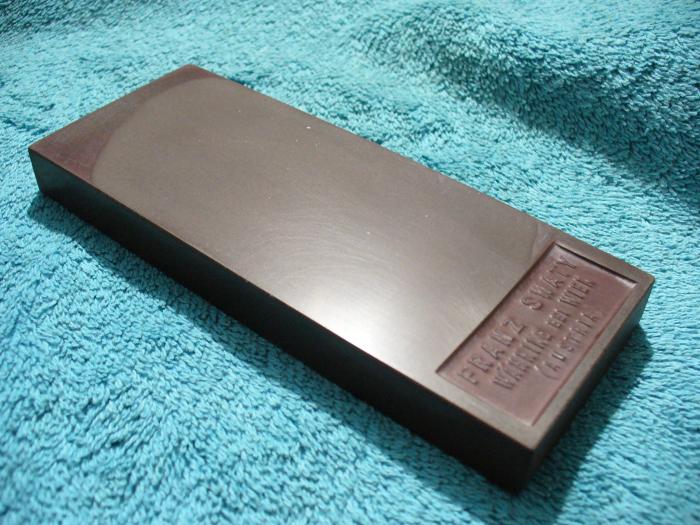Results 1 to 10 of 18
Thread: lap hone in geology lab?
-
01-14-2009, 09:47 PM #1Junior Member

- Join Date
- Jan 2009
- Posts
- 16
Thanked: 1 lap hone in geology lab?
lap hone in geology lab?
Hey all,
After poking around on the site for a bit it seems like the most economical thing for me to get started with honing is a barbers hone off of e-bay or the like. I'm getting my first razor professionally done and then I figure I can use the barbers hone to maintain the edge.
The question I have is about flattening (lapping) an old antique hone. I could use wet/dry sandpaper at home, but the facility in my geology lab at school may be better. We use wet silicon carbide grit (240, 600 mostly) on glass plates to polish rocks flat for analysis. Could I use the 600 grit on a glass plate to lap a barbers hone?
Thanks,
Xander
-
01-14-2009, 09:59 PM #2

That should work. Some coarser grit barber hones are porous while generally the finer grit barber hones have a non-porous glazed surface. I could visualize potential of a porous barber hone retaining carbide grit in the surface; this would be bad unless your intention was to hone no finer than 600 grit which is unlikely.
Chris L
*****Also, please ask your prof if there is a U.S. (assuming you're in the U.S.) native stone that rivals or exceeds the steel cutting and polishing ability of Novaculite. Even the hardest Novaculite is general sub par for straight razor honing. We're looking for something like an ultra fine consistent particle sized mudstone (waterstone).
I'm convinced that there must be deposits of stone in the U.S. that are preferable for fine polishing of razor edges and just have not been publicized much. Otherwise, what's the point of living here? ;-)))))))
Chris LLast edited by ChrisL; 01-14-2009 at 10:05 PM.
"Blues fallin' down like hail." Robert Johnson
"Aw, Pretty Boy, can't you show me nuthin but surrender?" Patti Smith
-
01-14-2009, 10:06 PM #3Junior Member

- Join Date
- Jan 2009
- Posts
- 16
Thanked: 1
Would 800 be enough or would you want to go to 1000?
Is it easy to tell whether a barbers hone is of the porous variety?
Thanks for the info.
-
01-14-2009, 10:10 PM #4

Should work fine. 1000 grit lapping wouldn't hurt anything. I've used 325 to 1200 on barber hones. You can judge porosity (sorta') by how fast water soaks into the dry surface.
Last edited by Sticky; 01-14-2009 at 10:16 PM.
-
01-14-2009, 10:20 PM #5Junior Member

- Join Date
- Jan 2009
- Posts
- 16
Thanked: 1
Just noticed the second part of your post Chris.
Actually I'm in Canada, but my field area is in the U.S. and my prof knows a fair bit about American geology. I'll look into it. Funny that you ask because I'm trying to find cheaper honing solutions and I've found a few novaculite stones online for pretty cheap. Good to know they are not suitable for straight razors.
-
01-14-2009, 10:28 PM #6

It's easy to tell the coarser porous ones. If the barber hone has never been lapped before, the finer stones like the Swaty and the "Perfect" brand hone have a shiny surface. A lot of barber hones were coated with shaving lather as a honing lubricant so splashing water on the surface of those stones when you're inspecting them will often cause water to bead up. Coarse stones, even if shaving lather was used will soak water in.
POROUS ("Royal Brand" dual grit barber hone). Lot's of pockets for fine abrasive lapping grit to hide:

SMOOOOOOOOTH surface. No problems with your lapping grits. The finer the better:

I hope that helps.
Chris L"Blues fallin' down like hail." Robert Johnson
"Aw, Pretty Boy, can't you show me nuthin but surrender?" Patti Smith
-
-
01-14-2009, 10:38 PM #7Junior Member

- Join Date
- Jan 2009
- Posts
- 16
Thanked: 1
Wow that SWATY looks nice.
Too bad I'm almost done my degree; doing a project on the geology of whetstones would have been fun.
-
01-14-2009, 11:51 PM #8

Barber hones are fun to play around with. Some, like the Swaty, get a shinier, more glossy surface after lapping (as will the Frictionite, Apart, etc...). Others, like the Dubl Duck combination, will get considerably duller without their "glaze". The change in gloss/shine isn't anything to worry about. e.g. Here's a pic of a Swaty that is about 85% lapped.

I also finish hone almost all my razors on a barber hone. Some of them work really nice.
-
The Following 2 Users Say Thank You to Sticky For This Useful Post:
bpave777 (01-15-2009), KingOfMalkier (01-15-2009)
-
01-15-2009, 12:21 AM #9

I can tell you that just about every rock and mineral that exists in the world can be found in the U.S. The rub is that many of the more esoteric species are found in such small quantities they aren't economically feasible to mine. That doesn't mean you couldn't go to a location and get plenty of the stuff for yourself. The problem is doing the research to locate what you want. You would have to start out by know something about the morphology of the rock you want and how it relates to other surrounding rock.
No matter how many men you kill you can't kill your successor-Emperor Nero
-
01-15-2009, 12:29 AM #10Junior Member

- Join Date
- Jan 2009
- Posts
- 16
Thanked: 1
Well it sounds like the novaculite is a chert, which is basically super-fine grained (microgranular) quartz. Some of the finer japanese stones sound like they are a mudstone. Mudstones can contain many mineral grains such as quartz particles and clays, but they have to be smaller than 62.5 microns. I guess for a whetstone the smaller and more uniform the grain size the better. You'd also want to find a mudstone that is not fissile or laminated (like shale)...it would have to be massive. I bet if you read formation descriptions on USGS maps it would give you areas to scout out.
P.S. I've seen a few barbers hones for cheap on ebay that are combination straight/safety hones. They seem to be smaller than the true straight hones (one I was looking at was 2.5"x2"). Would one of these be OK for refreshing a shave ready edge, or does the small size make it too impractical?
Cheers,
Xander


 1Likes
1Likes LinkBack URL
LinkBack URL About LinkBacks
About LinkBacks






 Reply With Quote
Reply With Quote

